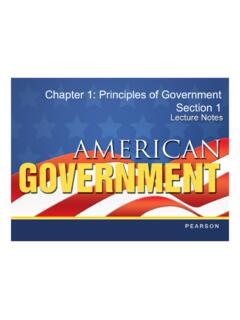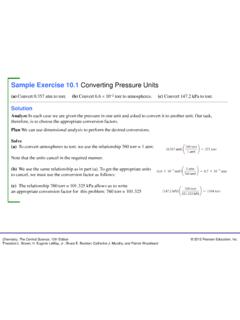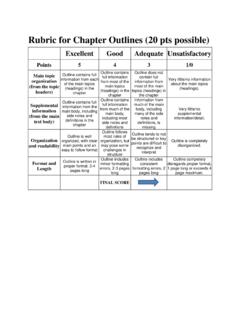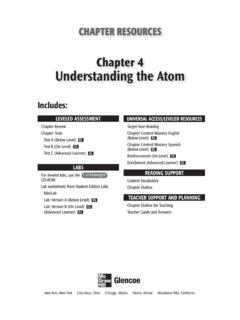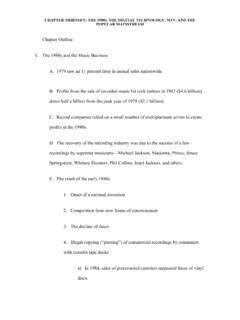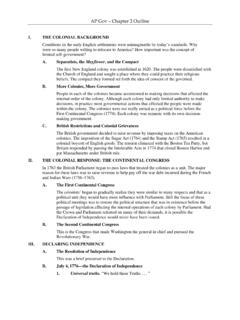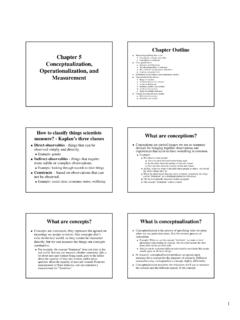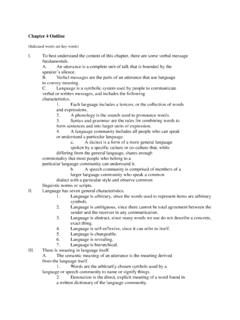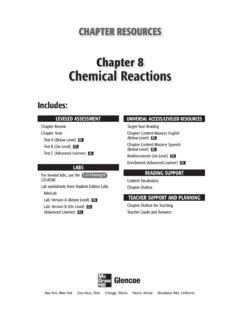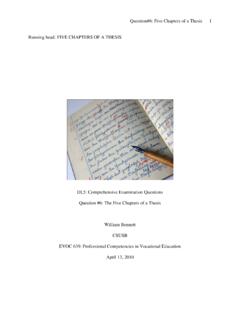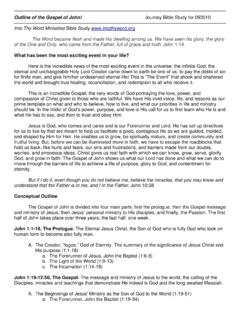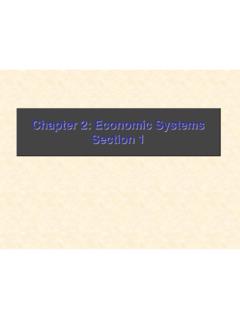Transcription of Chapter 3: The Constitution Section 1 - Central Lyon
1 Chapter 3: The ConstitutionSection 1 Chapter 3: The ConstitutionSection 1 ObjectivesObjectives1. Understand the basic outline of the Understand the six basic principles of the Constitution : popular sovereignty, limited government, separation of powers, Copyright Pearson Education, 2 Chapter 3, Section 1government, separation of powers, checks and balances, judicial review, and federalism. Key TermsKey Terms popular sovereignty:the political principle that people are the source of all governmental power and that government requires the consent of the governed limited government:the idea that Copyright Pearson Education, 3 Chapter 3, Section 1 limited government:the idea that government may only do those things that the people have given it the power to do constitutionalism:the idea that government must be conducted according to constitutional principlesKey Terms, Terms, cont.
2 Rule of law:the principle that government and its officers must always obey the laws of the land separation of powers:the principle that each of the basic powers of government Copyright Pearson Education, 4 Chapter 3, Section 1each of the basic powers of government executive, legislative, and judicial should be wielded by an independent branch of governmentKey Terms, Terms, cont. checks and balances:the system under which each branch of government can check, or limit, the actions of the other branches veto:to reject an act of CongressCopyright Pearson Education, 5 Chapter 3, Section 1 veto:to reject an act of Congress judicial review:the power of a court to determine whether a government action is constitutional or notKey Terms, Terms, cont. unconstitutional:in violation of a provision of the Constitution , and therefore illegal and of no effect federalism:the principle that political power should be divided between a Central Copyright Pearson Education, 6 Chapter 3, Section 1power should be divided between a Central government and a number of regional governmentsIntroductionIntroduction What are the six main principles on which the Constitution is based?
3 Popular Sovereignty Limited GovernmentCopyright Pearson Education, 7 Chapter 3, Section 1 Limited Government Separation of Powers Checks and Balances Judicial Review Federalism The Constitution embodies these key principles along with describing the basic structure of our of the ConstitutionOutline of the Constitution The Constitution is organized in a simple fashion and is fairly brief. In many areas it focuses more on principles than Copyright Pearson Education, 8 Chapter 3, Section 1more on principles than specific details. This helps it guide the nation through changing times. The seven articles are followed by the 27 SovereigntyPopular Sovereignty The principle that the people are the only source for all governmental power. The government rules through leaders elected Copyright Pearson Education, 9 Chapter 3, Section 1through leaders elected by the people to represent the people.
4 The Preamble notes that the Constitution is created by We the People. Limited GovernmentLimited Government Government may only do those things the people have given it the power to do. Government must Copyright Pearson Education, 10 Chapter 3, Section 1 Government must obey the law. Much of the Constitution spells out limits on the power of the of PowersSeparation of Powers Checkpoint: How does the separation of powers keep government from becoming too powerful? The Constitution divides power among the legislative, executive and judicial branches. Congress makes the laws, the President executes and administers the laws, and the Supreme Court interprets Copyright Pearson Education, 11 Chapter 3, Section 1administers the laws, and the Supreme Court interprets the laws. Separation of powers keeps a strong Central government from being too powerful. Too much power concentrated in any one branch could lead to abuses of that and BalancesChecks and Balances Each branch of the federal government can check the power of the other two.
5 The President can veto billspassed by Congress, but Congress can override a veto. The Senate can reject presidential appointeesor refuse Copyright Pearson Education, 12 Chapter 3, Section 1 The Senate can reject presidential appointeesor refuse to ratify a treaty. Congress can vote to impeacha federal official. The federal courts can rule that executive and legislative acts are and Balances, and Balances, cont. The use of checks is fairly rare. Compromise is more common Conflicts more likely when Congress and Copyright Pearson Education, 13 Chapter 3, Section 1when Congress and the presidency are controlled by different ReviewJudicial Review The Courts can decide if a government action is constitutional. The power of judicial review is held by all federal courts and most state courts. Copyright Pearson Education, 15 Chapter 3, Section 1 Judicial review was established as a necessary power of the courts by Supreme Court Chief Justice John Marshal in the case Marbury v.
6 Madison in 1803. Most acts are found to be constitutional, but the Supreme Court has struck down many presidential, congressional, and state measures over the Federalism is a compromisebetween an all-powerful Central government and an independent state government. It corrected the weaknesses of the Articles of Confederation without replacing them with a British-Copyright Pearson Education, 16 Chapter 3, Section 1 Confederation without replacing them with a British-style monarchy. The Framers felt that too much governmental power threatened liberty. Federalism helps prevent that power from being abused, by dividing governmental , , Pearson Education, 17 Chapter 3, Section 1 The Constitution divides power among the State and Federal Governments. Why might the Constitution give the power to regulate trade among the States to the Federal Government?ReviewReview Now that you have learned about the six main principles on which the Constitution is based, go back and answer the Chapter Essential Question.
7 How has the Constitution lasted through Copyright Pearson Education, 18 Chapter 3, Section 1 How has the Constitution lasted through changing times?
